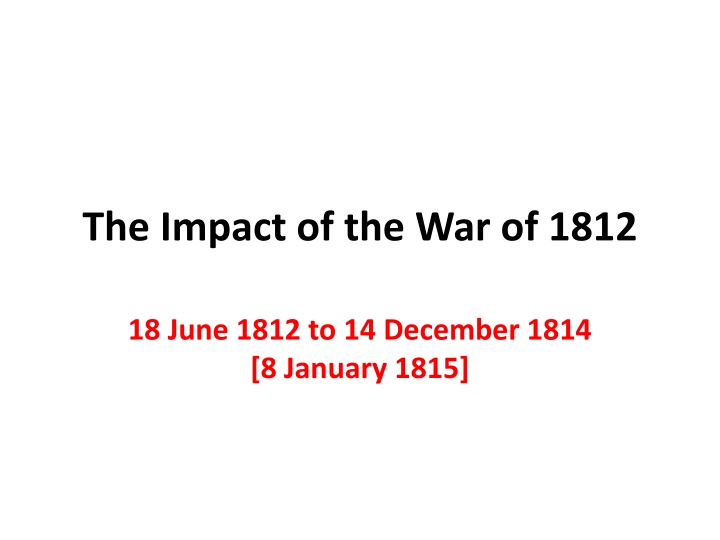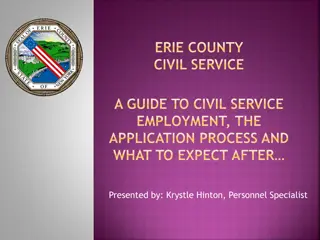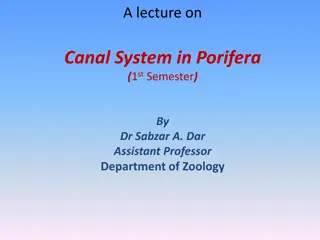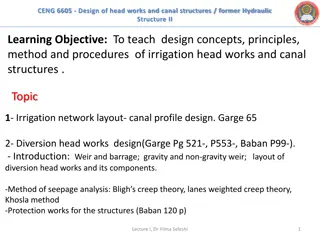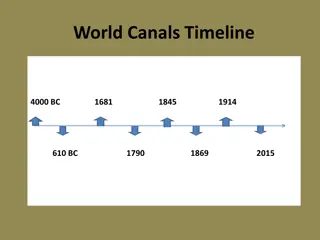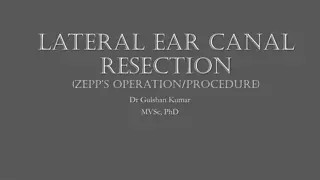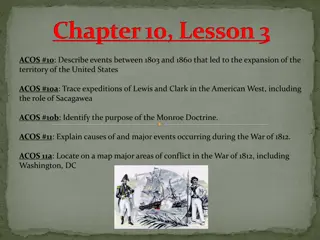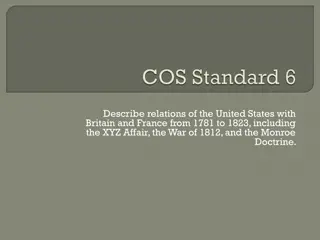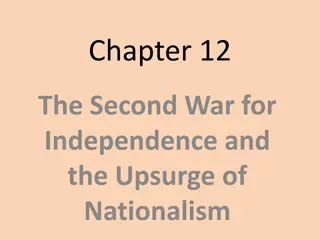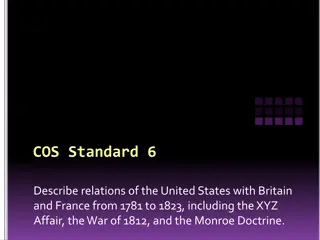The Impact of the War of 1812 and the Erie Canal Development
The War of 1812, lasting from June 18, 1812, to December 14, 1814, with some engagements continuing until January 8, 1815, had significant consequences on the United States. This period saw Abraham Alfonse Albert Gallatin serving as Treasury Secretary. Afterward, the construction of the Erie Canal between 1817 and 1825 revolutionized transportation, commerce, and trade, particularly in New York City. The Erie Canal's 363-mile length with 83 locks transformed the economic landscape, making New York a vital trading hub in the nation.
Download Presentation

Please find below an Image/Link to download the presentation.
The content on the website is provided AS IS for your information and personal use only. It may not be sold, licensed, or shared on other websites without obtaining consent from the author.If you encounter any issues during the download, it is possible that the publisher has removed the file from their server.
You are allowed to download the files provided on this website for personal or commercial use, subject to the condition that they are used lawfully. All files are the property of their respective owners.
The content on the website is provided AS IS for your information and personal use only. It may not be sold, licensed, or shared on other websites without obtaining consent from the author.
E N D
Presentation Transcript
The Impact of the War of 1812 18 June 1812 to 14 December 1814 [8 January 1815]
Abraham Alfonse Albert Gallatin (January 29, 1761 August 12, 1849) Cleaned up Daguerreotype Treasury Secretary 1801 - 1814
The Erie Canal Constructed 1817 - 1825
363 miles long, 83 locks, about 655 feet of elevation in the locks (up and down). The annual net gain on the Erie Canal over its first decade of operation, 1826 1835, was about 8 percent of its total construction cost per year!
The Erie Canal helped make New York City such a large trading center that it accounted for 50 percent of all U.S. foreign trade and duties collected.
Transportation costs from Buffalo to New York City in 1817 when construction began on the Erie Canal were three times the market value of a bushel of wheat and six times that of a bushel of corn. Small wonder that upstate New York commodities were not being shipped in large quantities to New York City!
